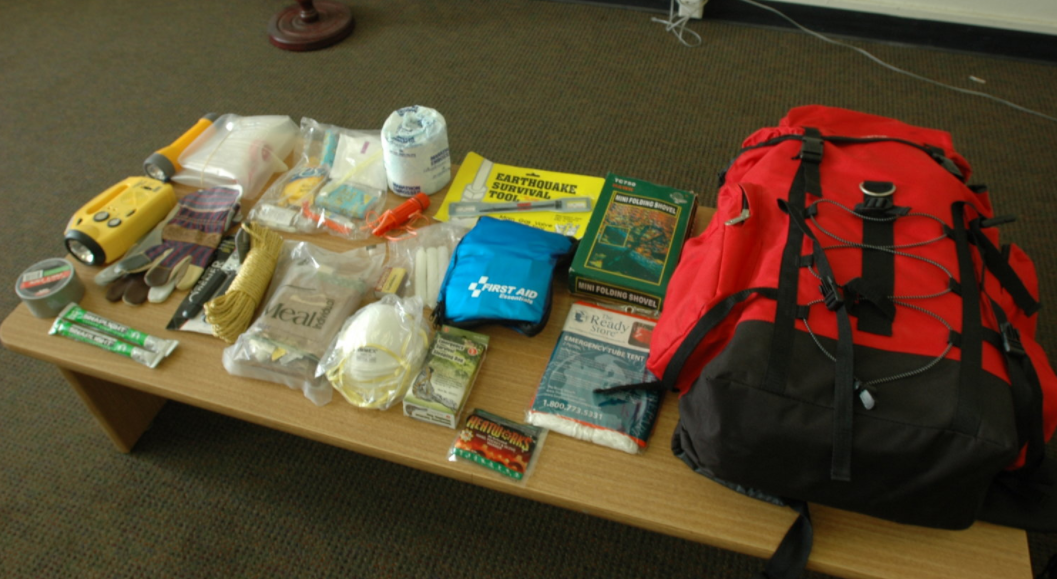
The average bug-out bag is designed to help you survive a 72-hour trip to your bug-out location after SHTF. But why stop there when you can guarantee your survival for much longer with a 96-hour emergency kit? (h/t to PrepSchoolDaily.Blogspot.com)
Considerations when preparing a 96-hour emergency kit
There are many guidelines online on how to pack an emergency kit. While some offer practical information, others forget several important factors, such as:
- You must pack high-calorie foods in your kit.
- Each kit must contain useful items that are tailored to each family member's needs and location.
- You need two-way radios for communication, copies of important documents, and cash.
- Putting each item in Ziploc bags will keep everything as good as new and usable.
- Storing items in Ziploc bags makes it easier to organize and waterproof each item.
- Having items in plastic bags also makes it easier to rotate them. (Related: Top 12 NECESSARY items for survival when SHTF.)
Below are several checklists for your 96-hour emergency kit.
Shelter and clothing
A tent that's large enough for your whole family might be too big for someone's bag. Keep it right next to the emergency kits instead.
Below are other items that you need in your kit:
- Blankets (fleece blanket, Mylar blankets, etc.)
- Clothing, at least one change minimum (e.g., bandanna or cap, medical scrubs, wool socks, reading glasses, sunglasses, underwear)
- Mini sewing kit
- Rain poncho
Personal safety
When SHTF, you must protect yourself with your weapon of choice.
- Firearm or pocketknife
- Pepper spray
- Whistle
Water
- Bottled water
- Personal water filter
- Water purification tablets
Fire starting and light
It's important to keep your firestarting gear in a sturdy Ziploc bag so the items will stay dry even if your kit accidentally gets wet.
- Fire starter kit (ferro rod, matches, petroleum jelly-cotton ball fire starters, lighters, etc.)
- Headlamp
- Handheld flashlight
- Extra batteries (must be rotated every six months)
Food
When choosing food that you're including in your kit, consider several things: Men need at least an average of 2,500 calories on a regular day while women need 2,000 calories. In stressful scenarios, both will need at least 1,000 more calories to compensate for mental stress and moderate physical exertion. You may need more calories in cold weather or after strenuous physical exertion.
Prepare ready-to-eat foods or those that need only hot water. Food products also need to be lightweight if you have to travel for a long time.
Bring food that your family likes to eat, such as:
- Canned beans, meats, and soup
- Cracker
- Dried fruits
- Fruit rolls
- Instant noodles, oatmeal, and soups
- Jerky
- MREs
- Nuts
- Peanut butter
- Trail mix
- Comfort foods (chocolate bars, hard candy, etc.)
Hygiene
Maintaining proper hygiene when SHTF improves your mood and prevents the spread of bacteria that can cause diseases.
Make sure each kit contains:
- Baby wipes
- Comb
- Deodorant
- Feminine sanitary items
- Hand sanitizer
- Lip balm
- Nail clippers
- Soap
- Toiletries
- Toothpaste and toothbrush
- Washcloth
- Toilet paper
- First aid (Personalized if a family member has certain health conditions)
Special needs
Family members with health conditions will need medication. Consider food allergies when preparing food for each kit.
If you have babies and pets, they will need their own items. Children may need toys to keep them busy or their favorite pillow so they can feel safe.
Pets will need saddlebags that they can carry comfortably, dog shoes, pet food, treats, food and water bowls, medication or supplements, and toys.
The best time to prepare your emergency kits is now. Learn more emergency preparedness tips and tricks at Preparedness.news.
Sources include:
PrepSchoolDaily.blogspot.com 1
Please contact us for more information.





















